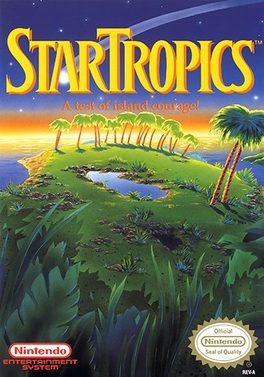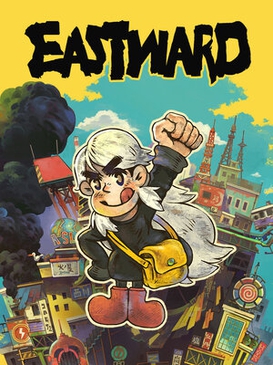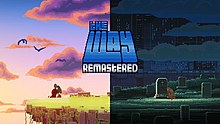Commander Keen is a series of side-scrolling platform video games developed primarily by id Software. The series consists of six main episodes, a "lost" episode, and a final game; all but the final game were originally released for MS-DOS in 1990 and 1991, while the 2001 Commander Keen was released for the Game Boy Color. The series follows the eponymous Commander Keen, the secret identity of the eight-year-old genius Billy Blaze, as he defends the Earth and the galaxy from alien threats with his homemade spaceship, rayguns, and pogo stick. The first three episodes were developed by Ideas from the Deep, the precursor to id, and published by Apogee Software as the shareware title Commander Keen in Invasion of the Vorticons; the "lost" episode 3.5 Commander Keen in Keen Dreams was developed by id and published as a retail title by Softdisk; episodes four and five were released by Apogee as the shareware Commander Keen in Goodbye, Galaxy; and the simultaneously developed episode six was published in retail by FormGen as Commander Keen in Aliens Ate My Babysitter. Ten years later, a homage and sequel to the series was developed by David A. Palmer Productions and published by Activision as Commander Keen. Another game was announced in 2019 as under development by ZeniMax Online Studios, but was not released.

Starflight 2: Trade Routes of the Cloud Nebula is a 1989 science fiction video game developed by Binary Systems and published by Electronic Arts as the sequel to the successful Starflight. It features a combination of space exploration, role-playing and strategy within a futuristic setting. The player commands a spaceship capable of traveling to the game world's 150 solar systems, communicating with or attacking other spaceships, and landing on planetary surfaces which may be explored with a crewed rover for plot clues, minerals and alien lifeforms. Game mechanics and the overall look and feel closely resemble the earlier Starflight game, but many new features are introduced including an interstellar trade-based economy, new sentient alien races, and new spacecraft accessories and artifacts. The player is tasked with discovering the ultimate source of the advanced spacecraft technology and unlimited fuel supply which provide a military advantage to the Spemin, a hostile alien race threatening to annihilate or enslave humanity. A major part of the game consists of earning enough money to pay for spaceship upgrades and crew training by engaging in interstellar trade and barter with various alien cultures at their planetary trading posts.

Eternal Darkness: Sanity's Requiem is an action-adventure video game developed by Silicon Knights and published by Nintendo for the GameCube in 2002. It was produced and directed by Denis Dyack. The game follows the story of several characters across a period of two millenia and four different locations on Earth, as they contend with an ancient evil who seeks to enslave humanity. The gameplay distinguishes itself with unique "sanity effects", visual and audial effects that confuse the player and often break the fourth wall.
Pikmin is a real-time strategy and puzzle video game series created by Shigeru Miyamoto, and published by Nintendo. The games focus on directing a horde of plant-like creatures called Pikmin to collect items by destroying obstacles, avoiding hazards, and fighting fauna that are hazardous to both the player character and the Pikmin.

StarTropics is a 1990 action-adventure video game developed and published by Nintendo for the Nintendo Entertainment System. Unlike most of Nintendo's games, it was never released or intended to be released in Japan. It was released only in North America and Europe. It was produced, written and directed by Genyo Takeda of Nintendo Integrated Research & Development. StarTropics was followed by a sequel titled Zoda's Revenge: StarTropics II, released in 1994.

The Daedalus Encounter is a 1995 interactive movie puzzle adventure game developed by Mechadeus and published by Virgin Interactive for Windows. The game was ported to the 3DO by Lifelike Productions and published by Panasonic. The premise of the game is that there are three space marines who have fought as part of an interstellar war. One of them, Casey, has been brought back to life by his partners after a space accident and he is now a brain grafted in a life-support system. In order to save themselves, the three characters and the player solve all sorts of puzzles.

Doom 64 is a first-person shooter game by Midway Games. It was first released for the Nintendo 64 in 1997, as the second spin-off game in the Doom series after Final Doom (1996), and the fourth game in the series overall. A remastered port was developed by Nightdive Studios and published by Bethesda Softworks for Nintendo Switch, PlayStation 4, Windows, and Xbox One in March 2020, and for Stadia in May 2020.

D/Generation is an action-adventure game with puzzle elements developed for the 8-bit Apple II during the late 1980s, but instead published and released for MS-DOS, Amiga, and Atari ST by Mindscape in 1991. The game takes place in a slightly cyberpunk futuristic setting in 2021.

Laser Invasion, released as Gun Sight (ガンサイト) in Japan, is a multi-genre first-person action game released by Konami for the Nintendo Entertainment System in 1991. The player takes control of a military operative who pilots an attack helicopter in order to infiltrate various enemy bases and fulfill his mission. The game supports the standard NES controller, as well as the NES Zapper light gun and the LaserScope, a voice-activated headset controller Konami released for the NES that was compatible with all light gun games released for the system. The American version of the game featured a rebate for the LaserScope in the instruction booklet.

De Blob is a puzzle-platform game. Players explore and liberate an alien city from the evil, monochromatic INKT Corporation that has taken over the city and outlawed all color and fun from daily life. Playing as Blob, players embark on a quest to re-animate the fictional Chroma City and free it from the INKT Corporation by splattering buildings, landmarks, and citizens with color.

Touch Detective 2 ½ is an adventure game for the Nintendo DS, iOS, and Android. It is a sequel to the Nintendo DS game, Touch Detective that is centered around the titular character, Mackenzie. It features 5 chapters that each have a case to be solved. Like its predecessor, this game is a point-and-click game that utilizes the device's touch screen. Its release sparked the development of many Funghi based spin-off games for mobile devices. The game is set to be released in Japan for Nintendo Switch as part of a compilation video game titled Touch Detective: Rina and the Funghi Case Files.
Professor Layton is a puzzle adventure video game series and transmedia franchise developed by Level-5. The property consists primarily of seven main video games, a mobile spin-off, an animated theatrical film, and an anime television series, while additionally incorporating an array of secondary titles and media, including a crossover game with Capcom's Ace Attorney series.

Moon is a first-person shooter video game developed by Renegade Kid for the Nintendo DS. The game was originally set to be shipped in North America on November 18, 2008, but the developer later pushed back the release to January 13, 2009. It was also released on June 3, 2009 in Europe.

War: Final Assault is a first-person shooter arcade game developed and manufactured by Atari Games and Midway Games. It was released on March 25, 1999 In North America, October 1, 1999 In Europe and on October 18, 1999 In Butlin's Minehead, United Kingdom. A Nintendo 64 version by Midway Games was planned, but its release was cancelled. There was also a PlayStation version in the works, which was also cancelled.

Commander Keen in Invasion of the Vorticons is a three-part episodic side-scrolling platform video game developed by Ideas from the Deep and published by Apogee Software in 1990 for MS-DOS. It is the first set of episodes of the Commander Keen series. The game follows the titular Commander Keen, an eight-year-old child genius, as he retrieves the stolen parts of his spaceship from the cities of Mars, prevents a recently arrived alien mothership from destroying landmarks on Earth, and hunts down the leader of the aliens, the Grand Intellect, on the alien home planet. The three episodes feature Keen running, jumping, and shooting through various levels while opposed by aliens, robots, and other hazards.

Starlink: Battle for Atlas is an action-adventure video game developed by Ubisoft Toronto and published by Ubisoft. It was released for the Nintendo Switch, PlayStation 4, and Xbox One on October 16, 2018, and for Microsoft Windows on April 30, 2019. The game also features optional toys-to-life elements. While the game got middling-to-positive reviews, it was a commercial failure for Ubisoft due to low sales.

Hue is a 2016 puzzle-platform game developed by Fiddlesticks and published by Curve Digital. The game was released on August 30, 2016, for Microsoft Windows, PlayStation 4, and Xbox One; on November 29, 2016, for the PlayStation Vita; and on June 6, 2019, for Nintendo Switch. There were further releases for iOS on January 25, 2020 and Android on April 22, 2020.

No More Heroes is an action-adventure hack and slash video game series developed by Grasshopper Manufacture and was created by Goichi Suda, also known by his nickname Suda51. The series' title comes from the album title No More Heroes, which was released by the British punk band The Stranglers. The games follows Travis Touchdown, a fan of video games, anime, manga and wrestling who wins a beam katana in an auction, from which he inadvertently becomes involved in the United Assassins Association and forced to kill assassins higher in rank to prevent other assassins from targeting him.

Eastward is an 2021 action-adventure role-playing video game developed by Pixpil and published by Chucklefish. It was released for the Nintendo Switch, macOS, and Windows in September and for the Xbox One in December 2022.
Gunbrella is a neo-noir action-adventure video game developed by indie studio Doinksoft and published by Devolver Digital. The game follows a gruff woodsman on a quest for revenge, armed with the mysterious Gunbrella: a firearm that doubles as an umbrella. Gunbrella combines elements of both the shooter and platformer genres, while incorporating unique gameplay mechanics such as using an umbrella as the primary weapon and tool.
















